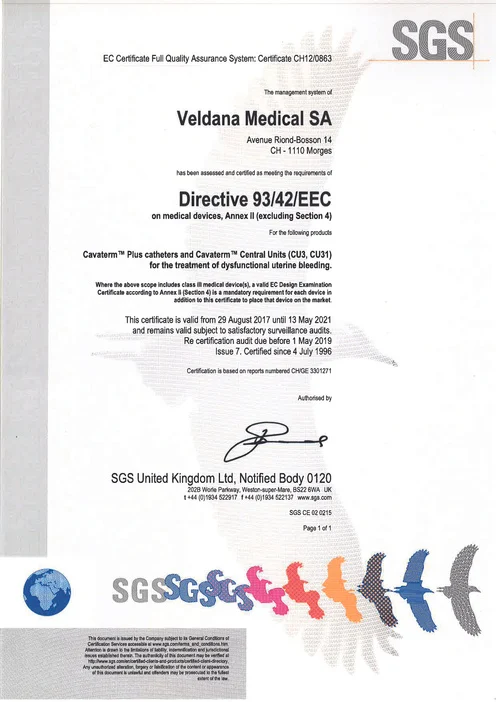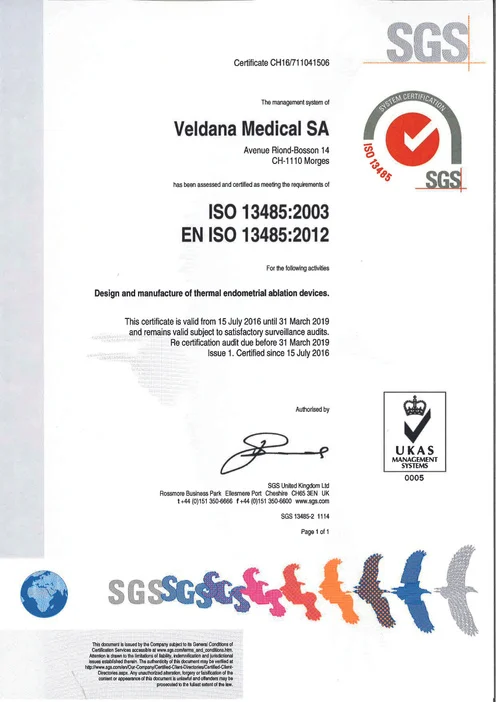Heavy menstrual bleeding (HMB)
Heavy menstrual bleeding (HMB) is a significant health problem in premenopausal women; it can reduce their quality of life and cause anaemia. One third of all women report heavy menstrual bleeding at some point in their lives, and in Western countries about 5 % of reproductive-aged women seek treatment for it annually. In over 50% of affected women no cause is found and the diagnosis of Dysfunctional Uterine Bleeding (DUB) is made.
Such statements and a lot of similar assertions are frequently reported in the literature available. They reveal how often you must be faced with patients complaining of bleeding disorders.
The classic definition of heavy menstrual bleeding, also called menorrhagia, is blood loss exceeding 80 ml per menstrual cycle, but this criteria is primarily used in research settings. In your practice, when a patient reports her periods to be so heavy or so long that it is interfering with her plans and activities, commonly causing stress and embarrassing incidents, she needs to be offered a solution.
You are of course aware that HMB is a common problem for women, which can seriously affect their quality of life. Being directly in contact with patients enduring bleeding disorders you know how to establish a diagnosis for each of your patients affected, then provide your patients with recommendations based on their medical conditions as well as personal expectations. You will lead your patient to the appropriate treatment and, in most cases, you will perform it. With Cavaterm™ Veldana Medical SA offers you a safe and easy to use solution for your patients suffering from dysfunctional uterine bleeding.

Cavaterm™
This second generation endometrial ablation technique consists of an adjustable, flexible silicone balloon catheter and a Cavabox.
The treatment combines heat and pressure during 10 minutes to irreversibly coagulate the endometrium and underlying myometrium to a depth of 5-8 mm.
Specific features are built in the system to ensure safety, efficacy and comfort.
The Cavaterm™ system has been successfully used since 1993. It is proven to be safe, efficient and easy to use. Over the past years further product developments based on users feedback were implemented for an optimal evolution of the system.
Many thousands of patients have been treated successfully with the Cavaterm™ system. Clinical studies report average success and satisfaction rates exceeding 90%, which remain stable throughout the years.
This second generation endometrial ablation technique consists of an adjustable, flexible silicone balloon catheter and a Cavabox.
The treatment combines heat and pressure during 10 minutes to irreversibly coagulate the endometrium and underlying myometrium to a depth of 5-8 mm.
Specific features are built in the system to ensure safety, efficacy and comfort.
The Cavaterm™ system has been successfully used since 1993. It is proven to be safe, efficient and easy to use. Over the past years further product developments based on users feedback were implemented for an optimal evolution of the system.
Many thousands of patients have been treated successfully with the Cavaterm™ system. Clinical studies report average success and satisfaction rates exceeding 90%, which remain stable throughout the years.
Benefits for Healthcare Professionals
Choosing the Cavaterm™ solution involves relevant advantages.
- You will benefit from a system equipped with unique features for optimized safety for your patient.
- The treatment safety and efficiency is well established with more than 15 years experience and thousands of patients successfully treated.
- Cavaterm™ is a “see one do one” procedure; you will learn the technique quickly and easily.
- Cavaterm™ is indicated for most uterine cavity sizes and shapes.
- Proven features from the latest technologies will offer you and your patient the best chances for successful treatment outcome.
- You will be using a Swiss quality product.
- You will save time: the treatment cycle lasts 10 minutes and the whole procedure lasts less than half an hour.
- The treatment can be performed under local, spinal or light general anesthesia.
- The treatment can be performed as an outpatient procedure.
- The Cavaterm™ treatment can be performed at any time during your patient’s menstrual cycle, and therefore scheduling conflicts are avoided
Benefits for Patients
Choosing the Cavaterm™ solution involves relevant advantages.
- Your patient will be offered a minimal invasive option; she will be thankful for the improved quality of life.
- Your patient will be given a permanent treatment.
- Your patient‘s hormonal balance will be preserved.
- Cavaterm™ will cause absolutely no feeling of mutilation / loss of feminity.
- Cavaterm™ does not cause post-operative hemorrhages.
- Post-operative infections are unlikely to happen.
- Your patient will be able to go back home a few hours after the treatment.
- Your patient will be back to her daily activities shortly.
- More than 90% of all patients are satisfied with the treatment .



